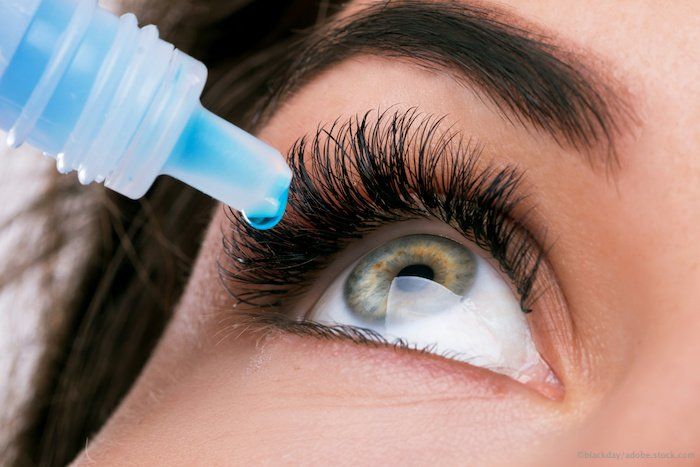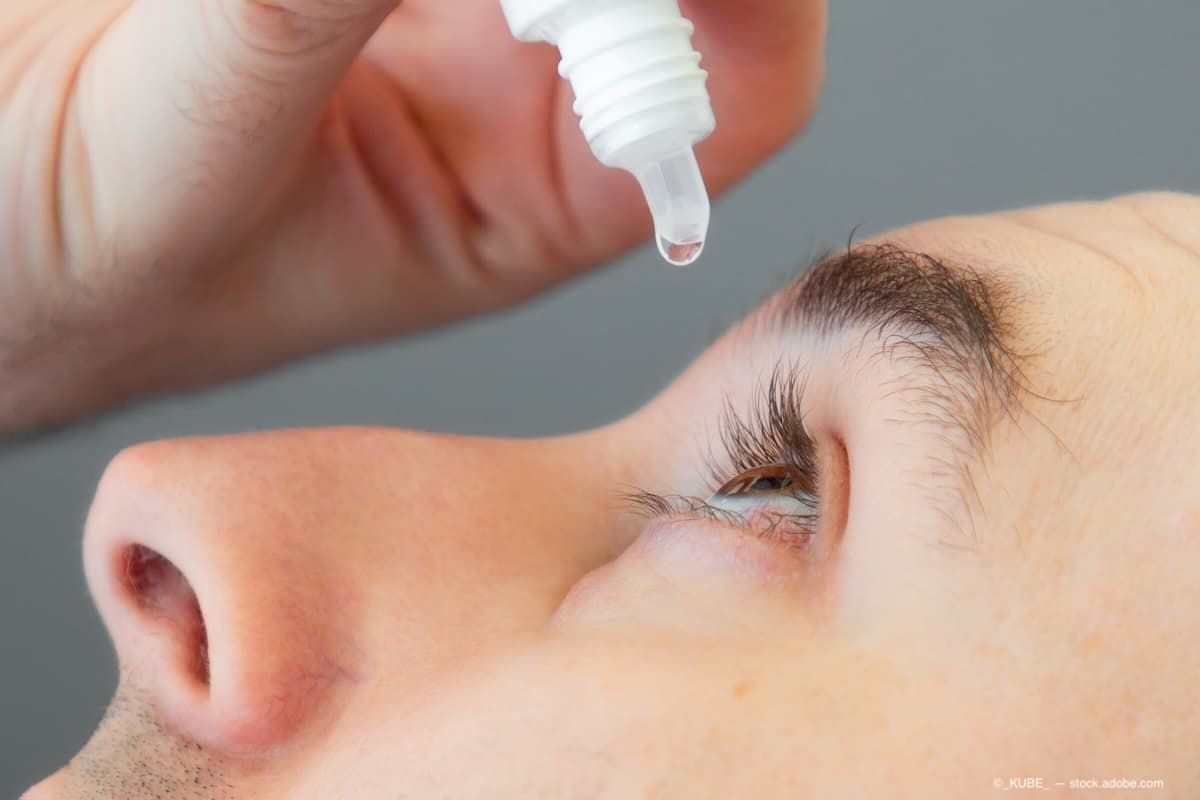Article
Treating dry eye with recombinant human nerve growth factor
Author(s):
A new therapy is being investigated in a phase IIb trial to test its safety and effectiveness in patients with moderate-to-severe dry eye disease.

Moderate-to-severe dry eye disease is coming under attack from a new direction. Oxervate (Dompé), a first-in-class recombinant human nerve growth factor (rhNGF) that successfully treats neurotrophic keratitis, is being investigated in a phase IIb trial to see how patients with moderate-to-severe dry eye disease fare with this therapy.
Why rhNGF?
A neurotrophin, rhNGF is a key element in the proper functioning of the central and peripheral nervous systems, endocrine, immune, and visual systems. NGF also is essential for the corneal and conjunctival trophism, sensitivity and healing.
The therapeutic potential of human NGF was realized when Dompé created a recombinant version of this protein and its safety and effectiveness were seen for treating neurotrophic keratitis. NGF has been shown in previous studies to act through specific high-affinity and low-affinity receptors on the lacrimal gland, epithelium, conjunctiva, endothelial cells and corneal nerves and is thought to work by supporting epithelial survival and maintenance, tear production, and corneal innervation, the investigators explained. Dompé recently announced that the study enrollment began on June 10 to investigate the novel mechanism of action of the drug.
This trial, Study NGF0118 (NCT03982368), is a multicenter, randomly selected, double-masked, vehicle-controlled, parallel group study to be performed in select sub-populations of patients with dry eye disease. The estimated primary completion data was in September, and the estimated study completion date is mid-2020, according to Melissa Toyos, MD, who is in private practice in Nashville and an investigator in the trial. About 300 patients at 11 U.S. sites are expected to participate in this study of the safety and efficacy of rhNGF eye solution (20 μg/ml) compared with the vehicle. Dry eye disease will be diagnosed through a variety of tests related to ocular surface health, objective measures of dryness, and patient-reported ocular comfort.
The patients, who will be randomly placed in three groups, will initially have four weeks of active treatment followed by a 12-week period of observation, Dr. Toyos explained.
The ClinicalTrials.gov website described the study design. The test and reference will be instilled in both eyes of each patients according to the following scheme that includes three groups of patients: group 1, one drop of rhNGF 20 μg/ml will be instilled in both eyes three times daily (every six to eight hours, e.g. 7 a.m., 2 p.m.; 9 p.m.); group 2, one drop of rhNGF 20 μg/ml will be instilled in both eyes two times daily plus one drop (40 μL) of vehicle will be instilled in both eyes once daily (every six to eight hours, e.g. 7:00 am, 2:00 pm; 9 p.m.). NB: rhNGF will be instilled in the morning and in the evening while the vehicle will be instilled in the afternoon; and group 3, vehicle eye one drop will be instilled in both eyes three times daily (every six to eight hours, e.g. 7 a.m., 2 p.m.; 9 p.m.).
RELATED CONTENT: Rethinking clinical strategy for treating dry eye disease
Tailored treatments
She also reported that the company will conduct another separate clinical study with the goal of collecting a variety of biomarker information from patients with dry eye disease in order to develop tailored treatments.
This tailored approach is important because of the wide diversity of symptoms. Flavio Mantelli, MD, PhD, explained the benefits of this approach.
“The effects of currently available treatments for chronic dry eye disease mostly address only inflammation and wear off soon after discontinuing therapy.” Said Dr. Mantelli, chief medical officer of Dompé.
The mechanism of action of NGF is well understood, he pointed out. He added that the research team hopes to utilize that mechanism to produce a new longer acting therapy that reduces the treatment burden, that includes rhNGF, for patients with dry eye disease.
Dr. Toyos went on to explain that because of the challenge of both diagnosing and managing dry eye, she is excited to investigate the potential of a treatment that may address the underlying tear production deficiency and the neuro-sensory abnormalities, which could result in a disease modifying therapy.
The primary study endpoint is the change from baseline in ocular surface tear wetting measured using the Schirmer I test. The secondary endpoints are the signs and symptoms of dry eye disease, including ocular surface staining, which is an objective measure of ocular surface integrity and health.
RELATED CONTENT: Nutrition a priority for dry eye patients
Previous promising data
A phase IIa study, a prospective open-label, multiple-dose, efficacy and safety study of rhNGF eye drops in a cohort of patients with dry eye disease preceded the current study. The phase IIa study, which was supported by Dompé, was conducted in Austria.
The results were published in the British Journal of Ophthalmology (Sacchetti M, et al. Published Online first: 03 April 2019. doi: 10.1136/bjophthalmol-2018-312470). In this study, the authors reported, “The data of this study indicate that rhNGF eye drops in both doses [20 µg/mL or 4 µg/mL] is safe and effective in improving symptoms and signs of [dry eye disease].”
“Dry eye is a complex disease that often is treated incompletely with currently available therapies. We are excited to explore how NGF uniquely addresses the root causes of ocular surface disease and, most importantly, we are intrigued by the extended therapeutic effect seen in earlier studies,” Dr. Toyos concluded.
Disclosures:
Melissa Toyos, MD
E: mtoyos@toyosclinic.com
Dr. Toyos is an investigator in the trial. She has no other financial relationships to report.
Newsletter
Don’t miss out—get Ophthalmology Times updates on the latest clinical advancements and expert interviews, straight to your inbox.




